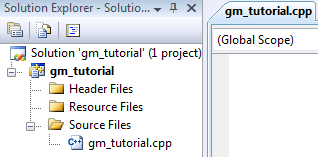

If you want to change things easily in your database to display new tracks, I found it easiest to edit the.GFF file into the database - On the command line:īp_seqfeature_ -c -dsn "dbi:mysql:antgenome" -user "myuser" -password "my password" antgenome.gb.gff Mysql> GRANT SELECT ON antgenome to GRANT ALL PRIVILEGES ON antgenome TO Copy an existing configuration file (database_nf) and adjust the paths to your new database and rename accordingly. antgenome) and grant the On Ubuntu Linux the user would be "mysql -uroot -prootpassword Create a database in your MySQL database (e.g.This will result in the creation of a file ("antgenome.gb.gff" in the example) gb) - On the command line:īp_ -noCDS -s antgenome.gb Make a GFF3 file for your genome (i.e.Here is the sequence of steps for creating new GBrowse databases: Chado databases - These are significantly slower than the GFF databases, but are feature-rich.GFF2 is deprecated and if possible you are strongly encouraged to use GFF3. GFF2 databases - older and unable to represent genes with alternative splicing patterns, features with more than one level of nesting, and several other common situations.GFF3 databases - slightly faster than GFF2 and able to represent multilevel features.

There are 3 widely used GBrowse Adaptors that use databases: Often the first step after installing GBrowse is to get the genomic data you want to see into a database that GBrowse can read. If you have a significant amount of data (and most people do) then you want to store your GBrowse data in a database and use a database adaptor. Several of those adaptors read data from database management systems ( a.k.a. GBrowse uses adaptors to read genomic data. 8 Using DAS (Distributed Annotation System) Databases.7 Changing the Location of the Configuration Files.3 Generating Feature Frequency Histograms.2.14 Generating Static Images: PNGs, SVGs and PDFs.2.11 Controlling the gbrowse_details page.


 0 kommentar(er)
0 kommentar(er)
